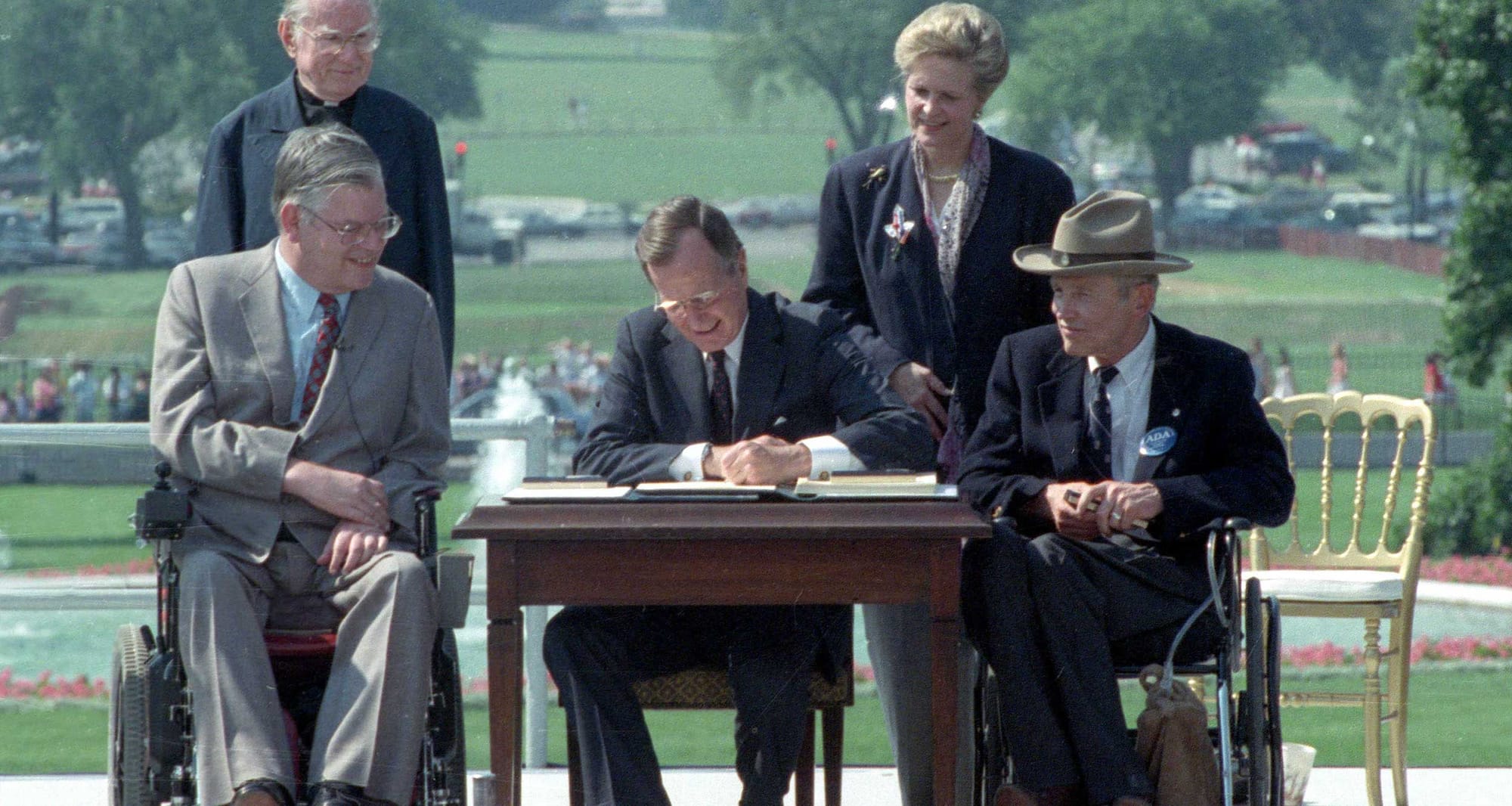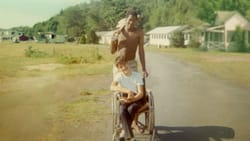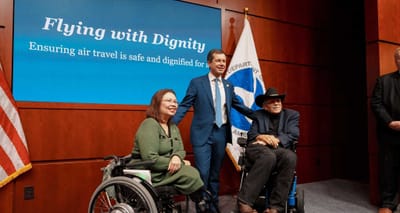The Americans with Disabilities Act was signed into law by President George H.W. Bush 30 years ago today, on July 26, 1990. On this special anniversary, I thought it fitting to write this love letter to the law which has been so instrumental in making my disabled life possible.
When the ADA became law, it was a watershed moment in American civil rights history, promising disabled people equal access to government, businesses, public accommodations, employment and the life of society. President Bush said that the law “represents the full flowering of our own democratic principles.” It was, as many declared, “The Emancipation Proclamation for the Disabled.”
Today, there are 61 million Americans who benefit from the ADA’s protections. From the moment of my car accident in 2012, the ADA began to shield me from abuse and discrimination, just as an eagle might spread its wings to protect and gather up its young. At the time, I was too focused on the shock of newfound disability to consider how important a civil rights law might one day be to me. But, as I began to explore the possibility of emerging from my bedridden state and traveling across America, the ADA shared a message of hope that no one had expressed before.
You are disabled, but no one has a right to hold you back or single you out. The world can still be your oyster.
Although no ADA angel or fairy appeared to deliver that message, the statement of purpose contained within the ADA states as much:
It is the purpose of this Act— to provide a clear and comprehensive national mandate for the elimination of discrimination against individuals with disabilities; to provide clear, strong, consistent, enforceable standards addressing discrimination against individuals with disabilities; to ensure that the Federal Government plays a central role in enforcing the standards established in this Act on behalf of individuals with disabilities; and to invoke the sweep of congressional authority, including the power to enforce the fourteenth amendment and to regulate commerce, in order to address the major areas of discrimination faced day-to-day by people with disabilities.
At the time, I hadn’t yet experienced any overt discrimination and wasn’t quite sure what disability discrimination actually looked like. American history is filled with many examples not only of discrimination, but also of exclusion. My studies as a history grad student at university had shown me what that could look like.
Fortunately for me, from the start of my life with disability, there was already a civil rights law that had been in place for nearly a quarter century. That knowledge gave me an immediate boost of self confidence and a recognition that, disabled though I may be, I still belong.
On previous anniversaries of the law’s passage, I have written at some length about the possibilities opened up to me as a result of the law, as well as its shortcomings. For that, I encourage you to read what I wrote two years ago, on the ADA’s 28th Birthday. The content in that article remains true today.
In the interest of keeping this year’s message short and sweet, I will just offer a note of thanks — to the late President George H.W. Bush, who signed the law; to former Senator Tom Harkin, who introduced the bill to the United States Senate; and to all the advocates, activists, campaigners and protestors whose efforts made the dream of civil rights protections for disabled people a reality.
The Americans with Disabilities Act declares that the ideal American reality is an inclusive one. Over the next decade, I hope that our community will find a renewed spirit of advocacy aimed at achieving greater access and more inclusion, both in the built environment and in society as a whole. Let us unite, whether in-person or online, to see that goal realized. There is much work to be done.
What does the ADA mean to you? Please share a few words in the comments below.















